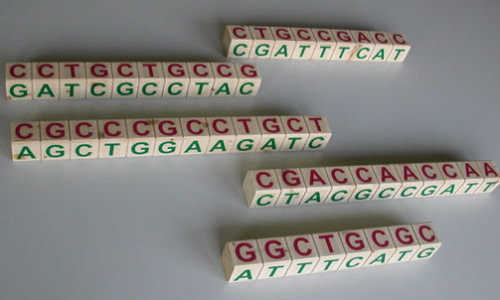Scientists in Russia plan to use DNA – our genetic material – to help them solve one of the perennial “back to school” problems faced by school administrators the world over: how to match up students, with classes and available teachers. Writing in the International Journal of Bioinformatics Research and Applications, the team explains how DNA’s ability to store information can be used to encode the timetabling problem and then a solution read out using enzymes.
Igor Popov, Anastasiya Vorobyova and Irina Blinova of the St. Petersburg National Research University of Information Technologies, Mechanics and Optics, explain how timetabling is a so-called NP-complete problem. Such problems are complex and have many possible solutions, some of which are near-perfect others not so much. The classic school timetabling problem involves accommodating a number of students in a finite number of classrooms for appropriate lessons with a limited number of teachers offering their chosen subjects. In general, school administrators at large schools offering many diverse courses will expend a large amount of energy attempting to fit all students and teachers into appropriate timetable slots during the school week. Issues come to light when a given subject is oversubscribed or when a subject offered has very few takers.
The team explains that timetabling essentially consists of a set of resources (teachers and classrooms), a set of activities (lessons, study periods, physical education), and a set of dependencies between the activities (is the Latin teacher available on Monday mornings? Are students interested in studying Latin available or are they likely to be in their Greek lesson on Monday mornings?). Time is divided into slots of the same duration and these can be hard or soft: a hard constraint indicates that the slot is forbidden for an activity (absolutely no Latin lessons last thing on a Friday as the teacher has to catch an early train back to Rome), a soft constraint indicates that the slot is not preferred (the Latin teacher is always available on Monday mornings but can take classes on Tuesday if students cannot make Monday morning). Every activity and every resource may have assigned a set of time preferences, which indicate forbidden and not preferred time slots.
All possible timetables can be encoded in a large number of synthetic strands of DNA, the team then explains. They then apply the various resources and constraints to a second strand of DNA. When this is mixed with in the test-tube with the encoded DNA strands it will match up with its complementary strand, which can then be filtered from the brew. An enzymatic DNA reading system can then identify the solution plucked from the mixture and reveal the optimal timetable.
Finding a unique, fully working solution to the timetabling problem usually involves exponential growth as student numbers, courses offered and teaching resources increase. The application of a DNA algorithm to this problem, which could also be applied to other logistics and scheduling problems, reduces this exponential problem (due to massive parallelism) to a polynomial one. “At present, the result is purely theoretical,” says Popov. “Its implementation will be an interesting future problem.”
Story Source:
The above story is based on materials provided by Inderscience.





